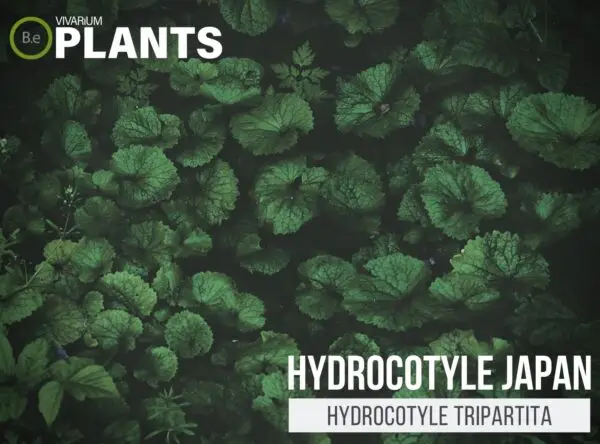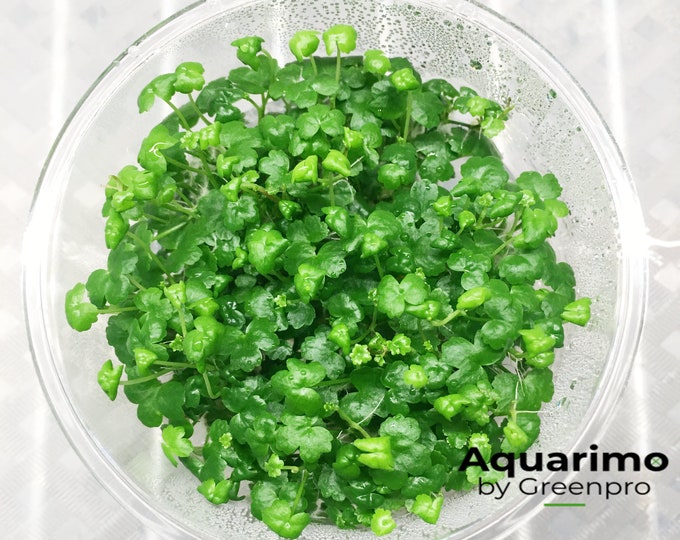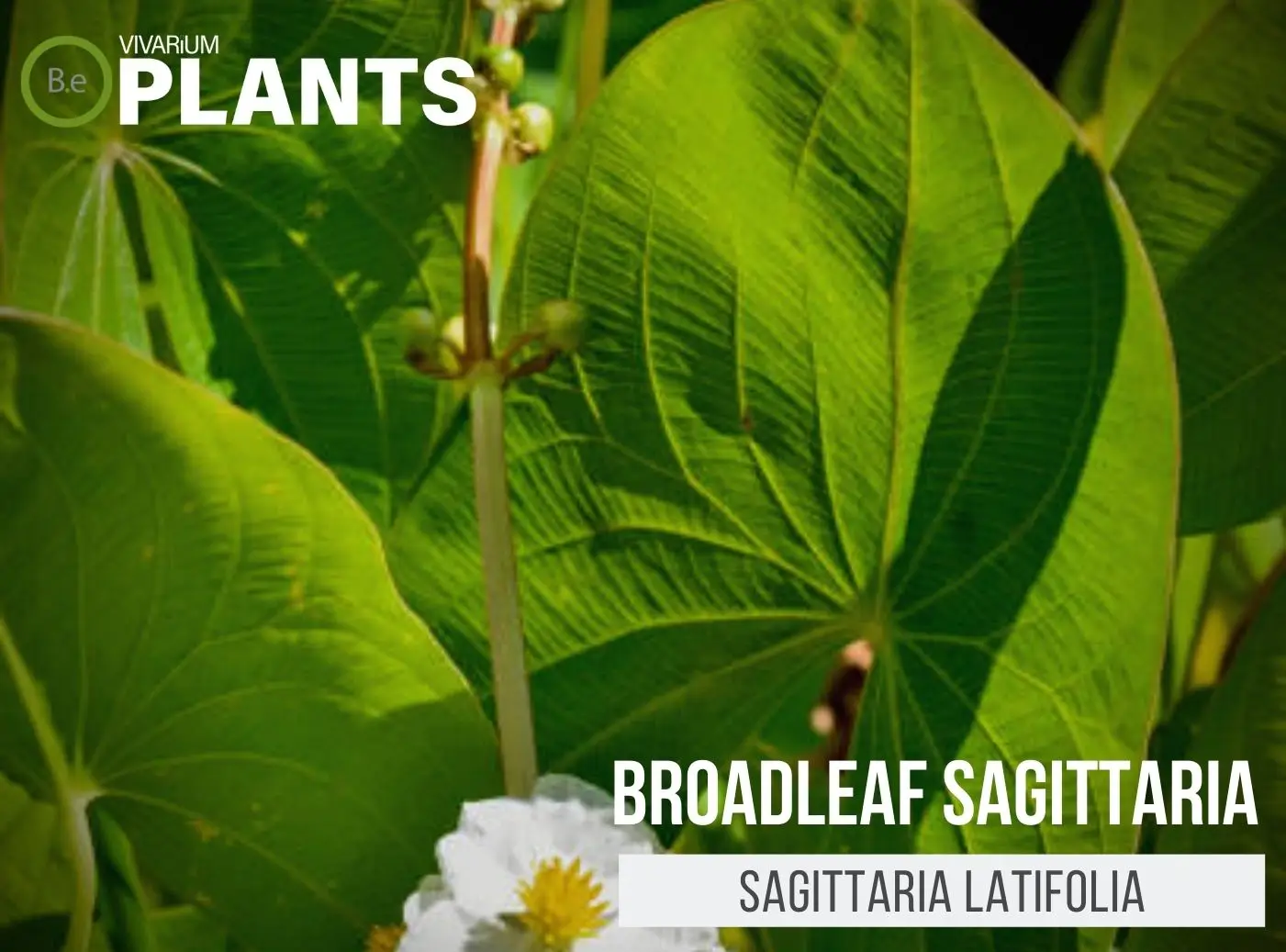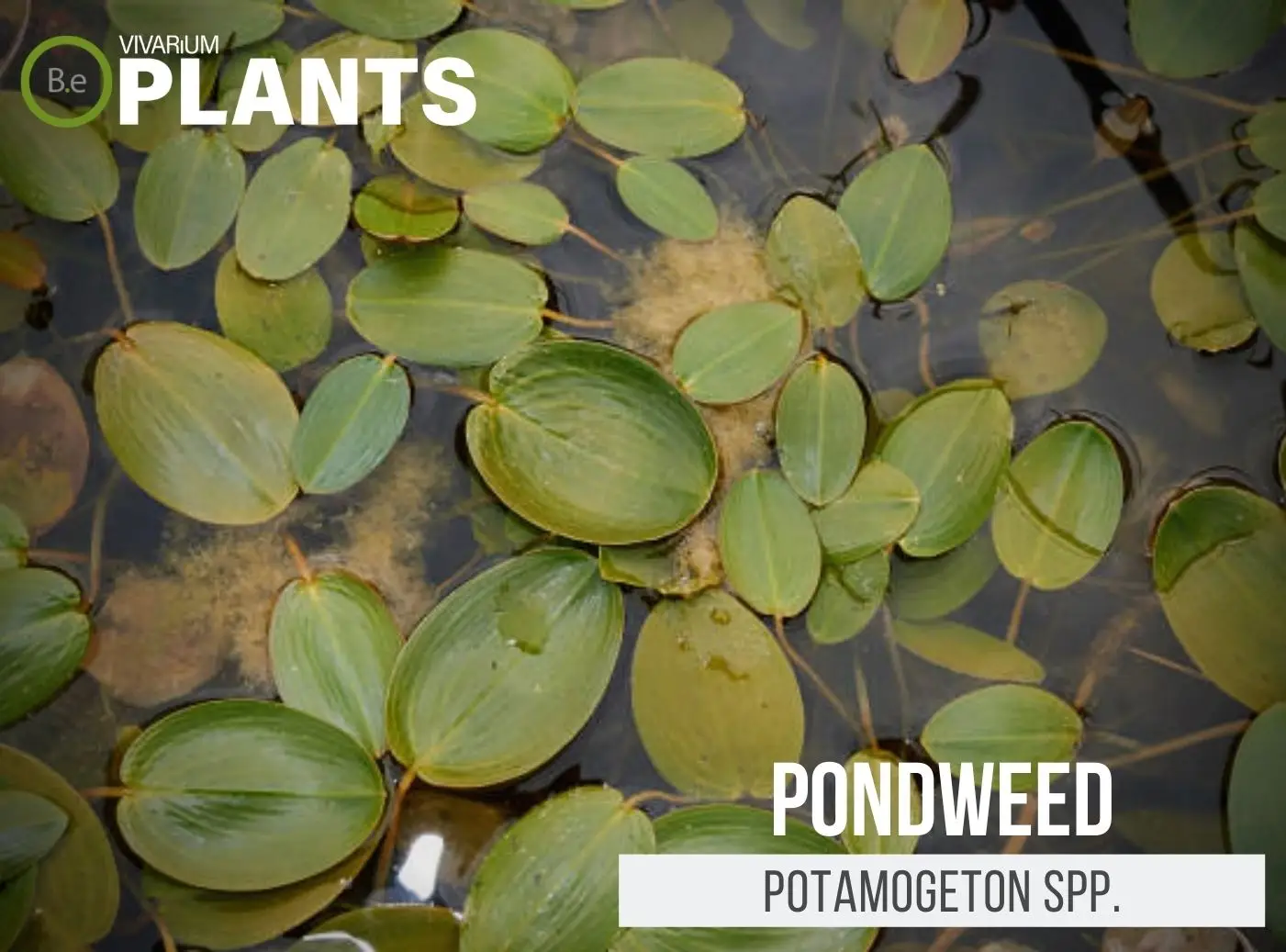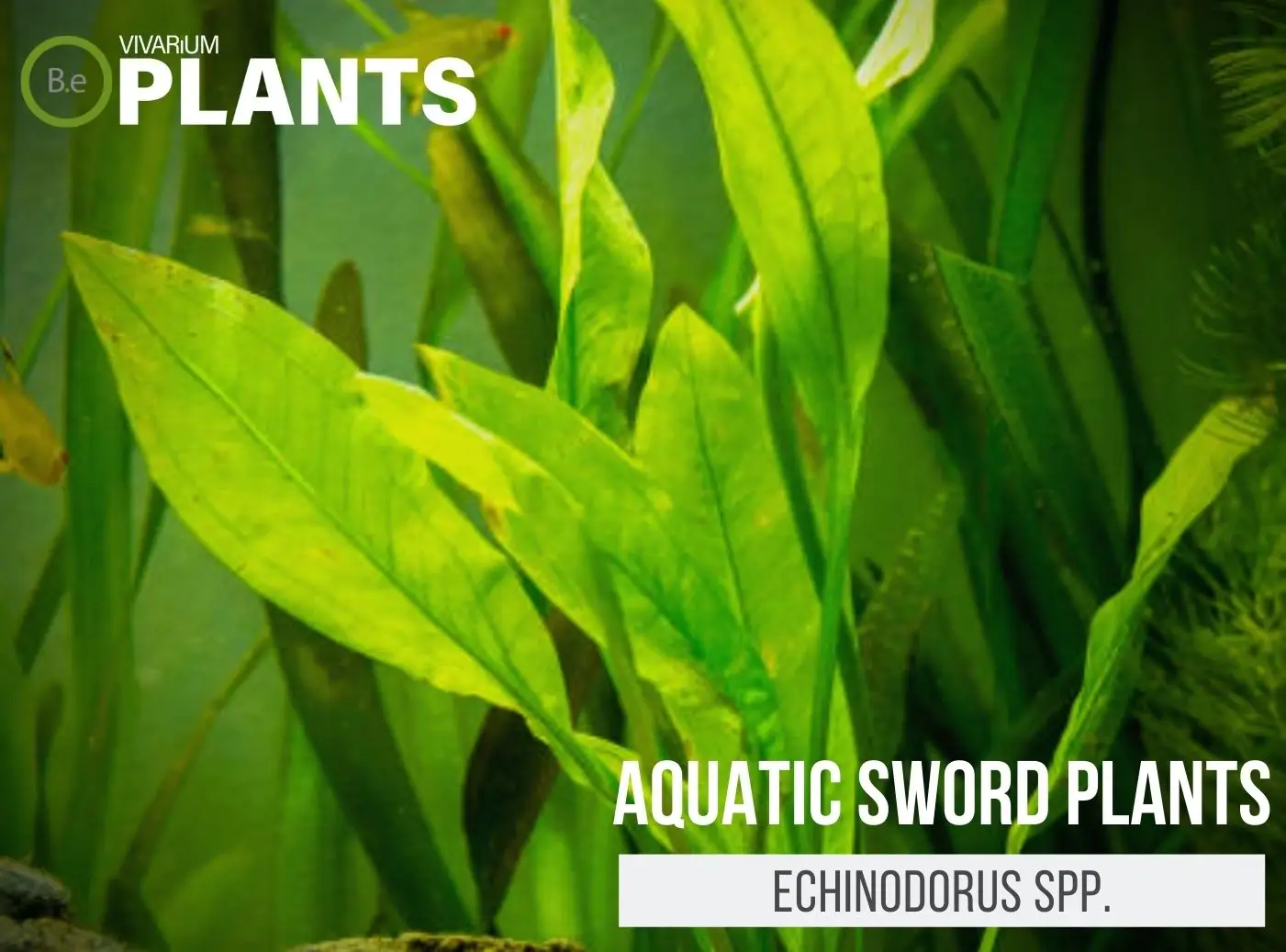Hydrocotyle tripartita, more commonly referred to as Hydrocotyle Japan, is an ideal, low-maintenance carpeting plant for both hobbyists and plant enthusiasts alike.
This species of the Hydrocotyle genus is native to areas of Japan, China, and India, where it is seen as a common aquatic or marsh plant.
Its unique, three-part symmetrical leaf shape makes it a great centerpiece to a semi-aquatic vivarium while also providing useful coverage and safe hiding places for creatures of all sizes.
Quick Stats:
Scientific Name: Hydrocotyle tripartita
Family: Araliaceae
Common Names: Hydrocotyle Japan
Habitat: Bogs & Moist Areas
Height: Less than 5 inches
pH Range: 5.0 – 7.0
Temperature: 72-78°F
What Is Hydrocotyle Japan?
Hydrocotyle tripartite, or Hydrocotyle Japan, is an aquatic, terrestrial, or amphibious flowering plant in the Araliaceae family.
Its oval-shaped leaves grow in sets of three, creating a triangular shape when viewed from above. This plant is true to its name, as it is covered with a thick coat of hydrated (water) and grows in graceful, reptilian formations of twisted tendrils.


Hydrocotyle Japan Facts
This plant is renowned for its ability to filter water and remove harmful toxins from tank water.
It also will collect food particles from the water, making it an ideal source of nutrition for those that feed on it.
Other than water, Hydrocotyle Japan will require a nutrient source from the substrate, either from the substrate itself or from added fertilizer.
Description
The Hydrocotyle Japan plant is a small, low-growing species that does not usually get bigger than 5 inches in height.
Its leaves are uniquely-shaped, with three lobes that fan out in a symmetric triangle when seen from above.
The coloration is one of its unique assets, ranging from deep green to a yellowish-green hue depending on the lighting.
Habitat
Native to the subtropical and tropical regions of Japan, China, and India, Hydrocotyle Japan has adapted to a variety of habitats and can thrive in extreme conditions.
It is comfortable in shallow bodies of water, bogs, and moist terrains. It prefers water that is slightly acidic and temperatures in the range of 72-78°F.
pH Preference
Hydrocotyle tripartita prefers somewhat acidic water, with a range of 5.0 – 7.0. A slightly lower pH may be preferred for optimum growth.
Vivarium Type
Hydrocotyle Japan is quite an easy-going species. With that in mind, it will not be too complicated when choosing the type of enclosure it is grown in.
It is best to try and replicate the plant’s natural habitat as much as possible. Doing so will make it easier to provide this foliage plant with its basic needs.
The proper setup and theme of the enclosure will make a big difference to the overall look and health of the plant. Be sure to choose setups that are moist and high in humidity.
Here are recommended vivariums it will do well in:
-
- Paludariums – Half aquatic/ half terrain-based enclosure.
- Ripariums – Mostly aquatic-based enclosures with some terrain features present.
- Aquariums – Fully aquatic-based enclosure with little to no dry terrain.
Vivarium Placement
Hydrocotyle Japan is well-suited for use as a low-maintenance foundation plant in terrestrial as well as aquatic terrariums.
Its small stature and slimy texture make it an ideal hiding place for small creatures and add a nice aesthetic to any vivarium. It is best used as a centered accent in the substrate to contrast against the background.
Substrate
This plant prefers a damp, but well-draining aquatic substrate. Such a substrate will help to keep the plant hydrated and provide necessary nutrients.
Coarser grit substrates or aquarium gravel is best used to achieve this. Sand will not provide enough oxygen flow to the plant.
Lighting
Hydrocotyle Japan will do well in environments with moderate to medium light levels.
Too much light exposure can cause the plant to die off or become stunted.
A standard LED or fluorescent bulb can be used in the vivarium to provide optimal aquatic lighting for the plant.
.
Buy Hydrocotyle Japan
When buying a Hydrocotyle Japan, there are a few things to keep in mind. Making sure the plant is healthy when purchased is essential for its success in a vivarium or pond. Vegetation that is already in poor conditions will have a very hard time adjusting to new environments.
Click the image below to learn more about the current price and other relative info about this plant.
Hydrocotyle Japan Care & Propagation
Hydrocotyle Japan is an easy-to-care-for carpet plant and can be propagated by dividing its stem clumps.
A sharp knife should be used to divide the stem into two or more parts before replanting it into the substrate in medium to thick clumps.
How To Grow
The easiest way to propagate these plants is by simply cutting off a section of the stemmed piece and replanting it in the substrate.
This can be done in tanks of water or moist substrate. While cutting, make sure to take small pieces, no larger than a few inches long, otherwise, the new piece may struggle to regrow.
Water Requirements
Hydrocotyle Japan prefers a stable tank environment with regular water changes but will still do well in a range of water parameters.
A pH of 6.0 to 7.0 and a hardness ranging from soft to moderately hard will benefit the growth of the plant.
Plants Similar To Hydrocotyle Japan
Adding diversity to an enclosure is key to an aesthetically pleasing setup. Try mixing up the look of your vivarium with different flora that can easily co-exist in the same types of environment.
Furthermore, if for some reason you find Hydrocotyle Japan hard to acquire or would like to consider something similar to this aquarium plant… Here are other carpeting plants you might find will do well with or in place of Hydrocotyle tripartita:
Conclusion
Hydrocotyle tripartita, or Hydrocotyle Japan, is a low-maintenance carpet plant that perfectly fits into an aquatic or terrestrial setup.
It is easy to care for and propagate and provides a great hidden area for vivarium inhabitants. When looking for a plant to fill the forest bed of a terrarium, Hydrocotyle Japan is a great option.
Frequently Asked Questions
No, Hydrocotyle Tripartita does not need high light in order to thrive. Moderate to low light is most suitable for this aquatic plant.
Yes, hydrocotyle tripartita can grow floating. This type of aquatic plant is known as a floating aquatic plant due to its ability to absorb nutrients from the water while growing on the surface.
Yes, Tripartita can grow without CO2 added to its environment. Carbon dioxide (CO2) present in the air is usually enough to sustain healthy growth in aquatic plants, so adding additional may not always be necessary.
Yes, hydrocotyle is an oxygenator plant in freshwater aquaria that provides dissolved oxygen to the water.
No, Hydrocotyle tripartita is an aquatic plant and therefore does not require soil to grow.
1. Gather the correct materials needed to plant Tripartita in your aquarium.
2. Clean the aquarium and its substrate.
3. Place the substrate in the aquarium.
4. Make sure the substrate is level.
5. Plant your Tripartita in the substrate.
6. Make sure the plants are not overlapping or too close together.
7. Cover the plants with the substrate.
8. Secure the plants with rocks or driftwood.
9. Pour freshwater into the aquarium.
10. Allow the plants to adjust to the aquarium’s water parameters.
